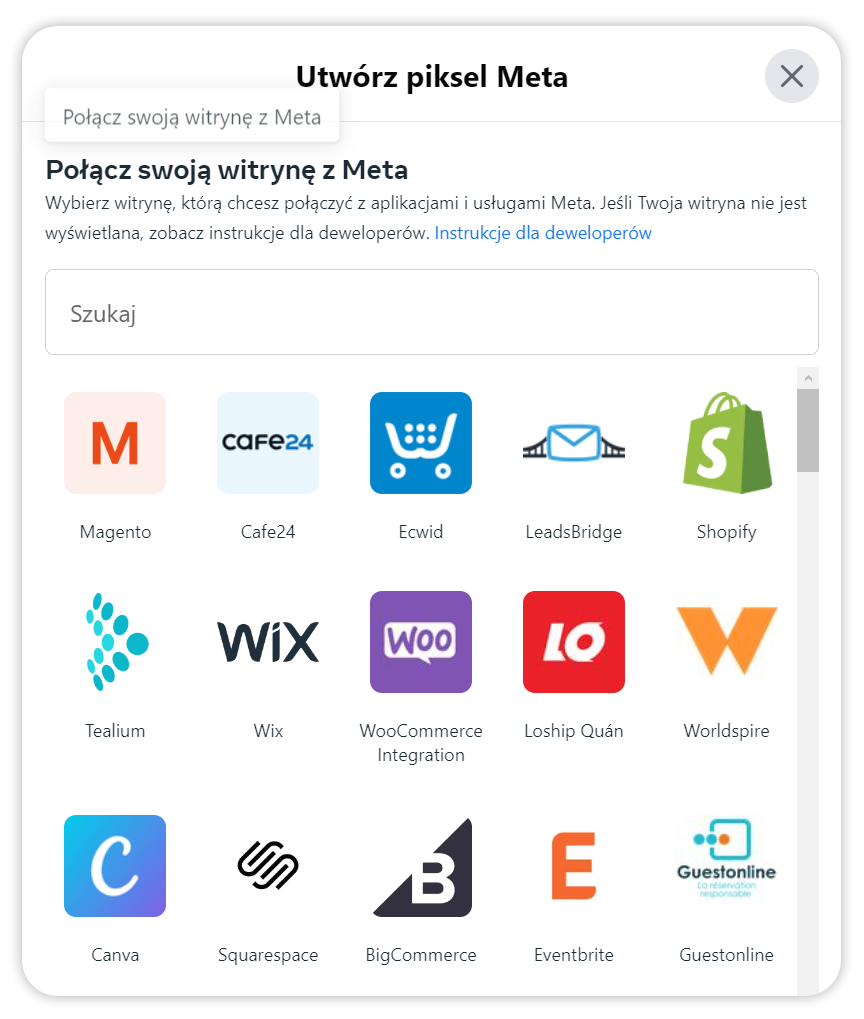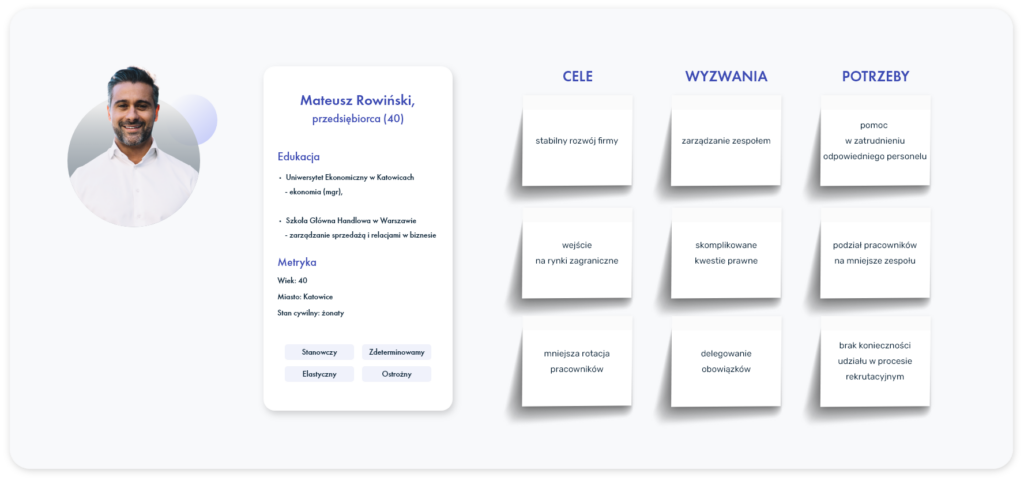Facebook’s potential is not easy to determine, but it can be done
In many guides to advertising on Facebook, we can find information about how many users are using the portal – all to show how many people we can reach with our products and ads. In reality, however, the number of less than 3 billion active users has no bearing on the actual potential of the platform. So let’s focus on Poland itself.
In December 2023, Facebook recorded 24 million active users in Poland, but it is estimated that about 5% of accounts are so-called “fake accounts.” These figures still don’t tell us much, however. To narrow down the audience a bit, consider the age of your potential customers, what they do for a living, where they come from, what gender they are, what they are interested in, and how much money they spend online – all these elements (and many more) make up the customer persona, or image of your company’s ideal customer. We’ll come back to it in a moment.
Facebook’s potential varies by age group. This is particularly evident among young people, who are more frequent and willing to use new social media platforms such as TikTok. So if you want to reach the youngest Internet users with your advertising message, consider launching your marketing efforts right on TikTok. Otherwise, Facebook will still be the best option – both in 2024 and in at least a few years to come.
Facebook advertising step by step
With Facebook ADS, you can reach a wide audience and show them your products or services. Facebook’s rulers have put a powerful tool in the hands of users – the META ad manager. It allows you to create ads that help you achieve very different goals.
Important!
If you already have a company’s Facebook page, you have surely noticed or have noticed the “promote post” button. It is visible under the posts you publish. It’s worth knowing that using this option rarely makes sense – promoting content this way leaves most to chance, and achieving favorable results borders on the miraculous. For Facebook ads, use the META ad manager.
To start, you need to create a META Business Suite account – you will create it at https://business.facebook.com. From the Business Suite, you will create an advertising account for your brand.
Facebook Ads – advertising targets
The advertising targets you can start with to create Facebook ads are:
- Recognition – especially important for companies that have just been established or have made significant changes, such as in branding. This goal helps present the ad to as many people as possible.
- Traffic – this goal focuses on getting as many clicks as possible on the link placed in the ad.
- Activity – choose this goal if you want as many reactions, comments and shares as possible.
- Contacts – an important target for companies that want to acquire leads, i.e. contact information of potential customers. The selection of this target makes it possible to use Facebook forms, but also to redirect users to a form placed on your own website or landing page.
- App promotion – a target for companies wishing to promote their apps that are already on the AppStore or Google Play and ready for download.
- Sales – this goal helps increase sales or conversions on your site, or app. Remember that direct sales on Facebook are no longer possible – at least not in Poland.
Once you have selected your campaign goal, go to the next screen. There, first name the campaign – preferably in a way that makes it easy for you to find it in the future. It’s a good idea to include the name or type of product being promoted and the type of advertising campaign in the campaign name. It’s also a good idea to add a date or period to the name – this will be especially important when you create many more campaigns.
Configure further campaign elements
The next step is to select a category – this only applies to campaigns that fit into one of the four available categories: credit, employment, real estate, and social, electoral or political topics. If your ad should fall into any of these groups, and you don’t select a category, Facebook may withdraw the campaign.

At this stage you can still change the campaign goal and set up A/B tests – we’ll come back to them. The next few settings vary depending on the selected goal, so we won’t discuss them now – but they are quite clear.
Set pixel, conversion event and budget
Next, you can select the Meta pixel, which we will tell you more about later in the text. If you already have a pixel configured, be sure to check this option.
A conversion event is an element that an ad should recognize as a conversion. It works in conjunction with a pixel. You can choose from a rather long list that includes contact, display content, add product to cart, add to wish list or purchase, among others.
Another important issue is to set an advertising budget. You can set a daily or total campaign budget at this stage. At this stage you will also set a start date and, optionally, an end date for the campaign. If you don’t set an end date, your campaign will run for as long as there are enough funds in the set budget. For your first campaigns, it’s a good idea to start with small amounts so that, should the campaign prove ineffective, you don’t burn through your budget.
Facebook pixel – what is it and why should you configure it?
A Facebook pixel – actually a Meta pixel – is a code that you can place on your website. This code measures the effectiveness of your ads by taking into account the behavior of users who have gone from Facebook to your store page, for example.

A properly configured Meta pixel also helps display Facebook ads to the right audience. As a result, it also helps increase sales – for example, by enabling you to reach users who care about completing purchases.
The pixel will activate every time a user takes an action on your website, be it adding a product to the shopping cart or moving to another subpage. The data thus received will be transferred to your Meta account, where you can analyze it and select the appropriate group to which you want to show further ads.
You can create and configure a Meta pixel using the official Meta guide.
Audience groups
The next step in the process of creating an ad in Facebook Ads, is to determine the audience. It’s obvious that you don’t want your ad to reach all Facebook users. The only result would be that your budget would quickly run out, without any positive effects. The Meta Ads Manager allows you to set your ad so that it displays to a fairly specific audience – as specific as you set it.

You can choose criteria such as location, age, gender, or language spoken by the recipient, but that’s not all. Very important are the detailed targeting options, where you can specify additional criteria based on users’ interests, behaviors or demographics.

But how do you know who to look for and how to set it up? A marketing persona can help you find the answer.
Why is the customer’s persona so important?
When creating graphics and content and configuring Facebook ads, you look at everything from your own perspective. This is natural, but you should get rid of this reflex as soon as possible. After all, you are not the one who will be the recipient of the ad, and you are not the one who should feel encouraged to buy the product or service. That is why it is necessary to get to know your customers.
In an ideal situation, you already know them: you know who buys from you, you know what they need and how you can solve their problems. Creating a customer persona helps especially those companies that are not in an ideal situation and need specifics – a picture of the customer they are supposed to address with their message.
Persona is otherwise known as an image of the ideal customer. This image should be as detailed as possible and, just as importantly, based on data. It’s not enough to write “my company’s customer is a 40-year-old entrepreneur who spends his day in business meetings,” although that’s hardly the worst introduction. To create an effective customer persona, it’s best to base it on data about your current customers. Find out as much as you can about them and compile this knowledge into a chart of one or more sample customers.
Here is an example of a client’s persona, prepared for an HR agency offering its services in recruiting and managing teams of employees:

What if you don’t have any customers yet? In that case, keep an eye on your competitors. Social media can help you with this. It is from them that you can learn many things about customers – both yours and someone else’s.
A persona is a kind of “resume” of an ideal customer – the kind you are looking for. When creating a persona, remember that customer needs are the most important. Without them, shopping in your store makes no sense.
Consider what value your product or service provides
To realize your customers’ needs, you must offer them value. It could be high quality products, a long warranty, door-to-door service, a wide selection, or maybe low prices? There is no single right answer to the question here. On your own, you need to get to know your customers and their needs, and then figure out how your product or service will help them meet those needs.
Create an advertisement
When planning advertising, try to combine the value offered by your product with the need your audience already has. This way you can create effective advertising.
Graphics and content should relate to the problem the customer wants to solve or with the need they want to fulfill. Remember, however, that graphics are the first element of this basic advertising funnel. When scrolling through content on Facebook, users only stop at the content that caught their interest right away. A good graphic will make the user click almost immediately. Only when there is a moment of hesitation, the matter can still be saved by content. It’s a lifeline for your advertising – that’s why it’s also worth spending a lot of time on.
Test
Run the prepared advertising variants using the tips above, but don’t spend a lot of money on them right away. At first, it is worth testing the ads, setting the budget at the level of tens or hundreds of zlotys. Only after the “trial period” can you determine whether the results are satisfactory, or whether it might be worth improving things after all.
Not sure which of the prepared variants of ads will work best? 8 before, check the results of the campaign. Remember, however, that – in order to achieve meaningful results – you must run all variants on the same basis, with identical settings. Only under such conditions will you have the opportunity to compare the effectiveness of your creations.


